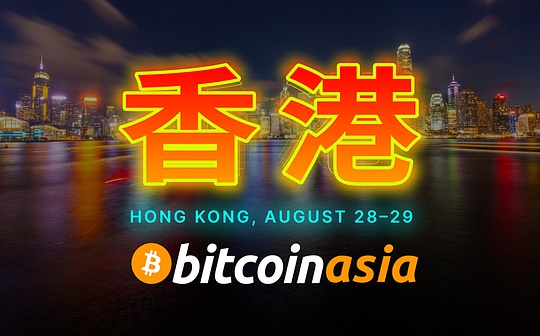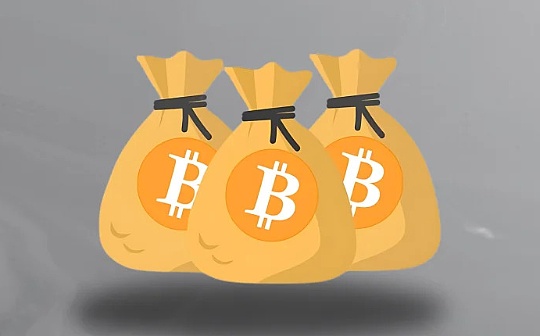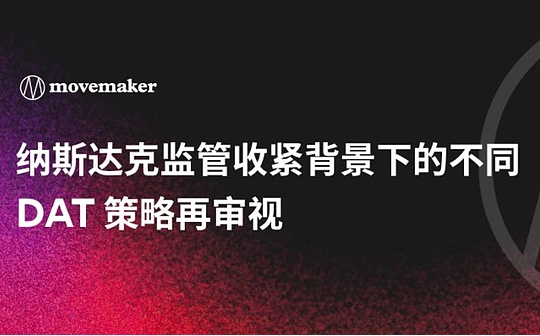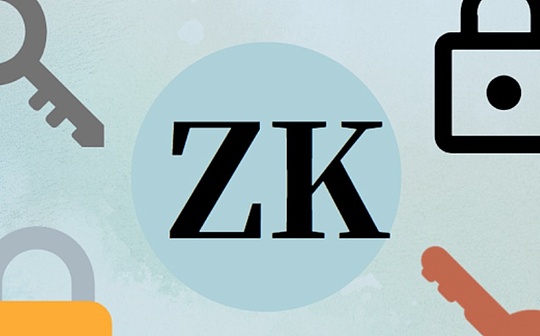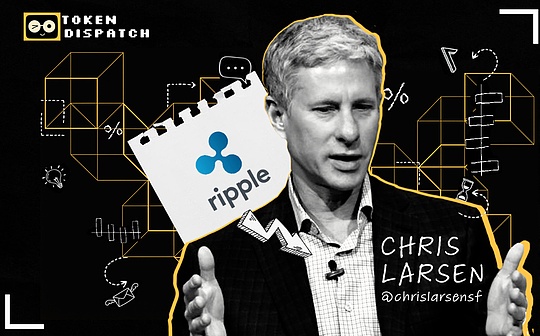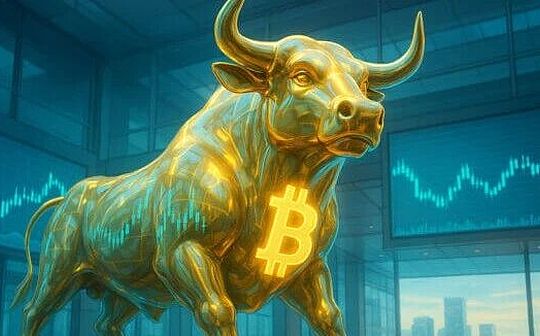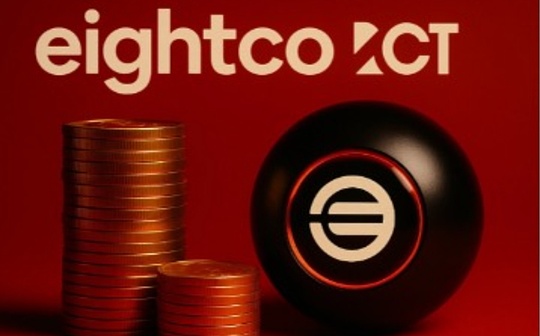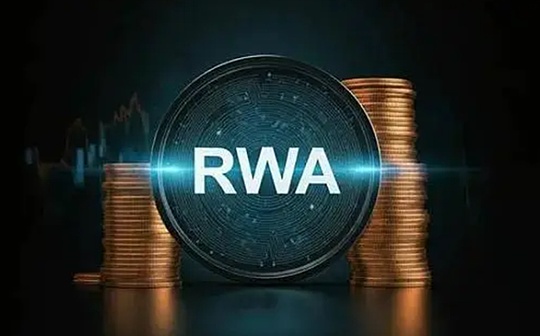
Source: Crypto Salad
Recently, discussions on the RWA project have been booming in major Web3 communities.Industry observers often put forward the assertion that “RWA will reconstruct the new financial ecology of Hong Kong”, believing that relying on the existing regulatory framework of the Hong Kong Special Administrative Region, the track will usher in breakthrough development.During the process of communicating and discussing with colleagues, Crypto Saru has found that everyone has been arguing about the so-called “compliance” issue recently, and their understanding of the issue of “what is compliance” is also different. There is always a situation where the public speaks and the mother speaks and the mother speaks and the mother speaks and the mother speaks and the mother speaks and the mother speaks and the mother speaks and the mother speaks and the mother speaks and the mother speaks and the mother speaks and the mother speaks and the mother speaks and the mother speaks and the mother is reasonable recently.The emergence of this phenomenon is actually based on the differences in understanding the concept of RWA.
Therefore, it is necessary to talk about how the concept of RWA should be defined on this issue from the standpoint of a professional lawyer team, and sort out the compliance red line of RWA.
1. How should the concept of RWA be defined?
(I) Background and Advantages of RWA Project
At present, RWA is becoming the focus of hot discussion in the market and has gradually formed a new wave of development.The formation of this phenomenon is mainly based on the following two major backgrounds:
First, because the advantages of the token itself can make up for the shortcomings of traditional financing.
Projects in traditional financial markets have long faced native shortcomings such as high entry thresholds, long financing cycles, slow financing speeds, and complex exit mechanisms.But token financing happens to avoid these shortcomings.Compared with traditional IPOs, RWA has the following significant advantages:
1. Fast financing speed:Since token circulation is based on blockchain technology, it is usually circulated in decentralized intermediary trading institutions, it avoids obstacles such as foreign investment access restrictions, industry policy constraints, lock-up period requirements that traditional financial projects may encounter. At the same time, it can also compress the review process that originally took months or even years, greatly improving the financing rate.
2. Asset Diversification:The asset type of traditional IPO is single and only supports equity issuance, so there are strict requirements on the revenue stability, profitability and asset-liability structure of the issuing entity.However, for RWA, there are more types of suitable assets, which can cover all kinds of non-standard assets. This not only expands the scope of financing assets, but also shifts the focus of credit appraisal to the quality of underlying assets, which significantly lowers the qualification threshold of issuing entities.
3. The financing cost is relatively low: Traditional IPOs require long-term participation and cooperation among multiple intermediary institutions such as investment banks, auditing, and law firms. The entire listing process costs can reach one million or even tens of millions of yuan, which is huge.However, RWA saves a lot of money from intermediaries through decentralized exchanges, and also saves another large amount of labor costs through smart contracts.
In summary, RWA has reached the forefront of financing projects with its unique advantages, and the Web3 world and currency circle also require traditional real-world funds and projects.This has led to the fact that today, whether you want to complete a substantial business transformation or simply want to take advantage of the “hot” and “get the popularity”, from leading projects in the sub-sectors of listed companies and “strange and strange” startup projects at the bottom, you are actively exploring the application possibilities of RWA.
Second, Hong Kong’s “compliance” has added fuel to the popularity.
In fact, RWA has been developing overseas for a while, and this wave of popularity has come fiercely because after Hong Kong has passed a series of regulatory innovations and implemented several benchmark projects, it has provided domestic investors with channels for compliant participation in the “RWA” for the first time.The “compliance” RWA that Chinese people can reach is implemented.This breakthrough progress not only attracted native crypto assets, but also prompted projects and funds in traditional fields to start paying attention to the investment value of RWA, and ultimately pushed market popularity to a new high.
However, do users who want to try out RWA really understand what RWA is?RWA has a variety of projects, with various underlying assets and operating structures. Can you tell the difference between them?Therefore, we believe that it is necessary to use this article to define for you what a compliant RWA is.
It is generally believed that RWA is a financing project that tokenizes underlying real-world assets through blockchain technology.But when we look at the underlying assets of each project and reverse the process of project operation, we will find that the underlying logic of these projects is actually different.We conducted a systematic study on this issue and summarized the concept of RWA as follows:
We believe that RWA is actually a general concept and does not have the so-called “standard answer”.The process of realizing asset tokenization through blockchain technology can be called RWA.
(II) Elements and characteristics of RWA projects
A real RWA project needs to have the following characteristics:
1. Take real assets as the bottom layer
Whether the underlying assets are real and whether the project party can establish a transparent off-chain asset verification mechanism that can be accepted for third-party audits is the key basis for judging whether the project token will achieve effective value recognition in reality.For example, PAXG, the project issues tokens anchored with gold in real time. Each token has an ounce of physical gold endorsement, and the gold reserves are on a third-party management platform, and a third-party audit company conducts quarterly reserve audits, and even supports the use of tokens to redeem the corresponding amount of physical gold.This highly transparent and regulated asset verification mechanism allows the project to win the trust of investors and also gives it a basis for effective valuation in the real financial system.
2. Asset tokens are chained
Asset tokenization refers to the process of transforming real-world assets into digital tokens that can be issued, traded and managed on-chain through smart contracts and blockchain technology.RWA’s value flow and asset management processes are both executed automatically through smart contracts.Unlike the traditional financial system that relies on intermediaries for transactions and settlements, RWA projects can use smart contracts to achieve transparent, efficient and programmable business logic execution on the blockchain, thereby significantly improving asset management efficiency and reducing operational risks.
Asset tokenization gives RWA key characteristics of being segmentable, tradable and high liquidity.After asset tokenization, assets can be split into small tokens, lowering the investment threshold, changing the holding and circulation methods of assets, and allowing retail investors to participate in the originally high-threshold investment market.
3. Digital assets have ownership value
The tokens issued by the RWA project shall be digital assets with property attributes.The project party should clearly distinguish the difference between data assets and digital assets: data assets are a collection of data owned by the enterprise and can create value.But in contrast, digital assets are value itself and do not need to be repriced through data.For example, when you design a painting, upload it to the blockchain and generate an NFT, this NFT is a digital asset because it can be confirmed and traded.However, the large number of users’ feedback, browsing data, clicks and other data you collect for this painting are data assets. You can judge user preferences by analyzing data assets, improve your work, and adjust its price.
4. The issuance and circulation of RWA tokens comply with legal regulations and are subject to administrative supervision.
The issuance and circulation of RWA tokens must be operated under the existing legal framework, otherwise it may not only lead to project failure, but also legal risks.First of all, real-world assets must be real and legal, with clear ownership and no disputes, so that they can be used as the basis for token issuance.Secondly, RWA tokens usually have income or asset interests and are easily recognized as securities by regulatory agencies in various countries. Therefore, they must be handled in compliance with local securities regulations before issuance.The issuing entity must also be a qualified institution, such as holding an asset management or trust license, and completing KYC and anti-money laundering procedures in conjunction with it.After entering the circulation process, the trading platform of RWA tokens also needs to be regulated, usually requiring a compliant exchange or a secondary market with a financial license, and arbitrary trading on a decentralized platform is not allowed.In addition, information disclosure is required to ensure that investors can obtain the true situation of token-linked assets.Only under such a regulatory framework can RWA tokens be issued and circulated legally and safely.
In addition, RWA’s compliance management has typical cross-jurisdictional characteristics, so it is necessary to build a systematic compliance framework covering the legal norms, capital flow paths and various regulatory authority of the asset location.During the entire life cycle of asset opening, cross-chain, and cross-border and cross-platform circulation, RWA must establish a compliance mechanism covering multiple links such as asset rights confirmation, token issuance, capital flow, income distribution, user identification and compliance audit.This involves not only legal advice and compliance design, but may also require the introduction of third-party trust, custody, auditing and regulatory technical solutions.
(III) Types and Supervision of RWA Projects
We found that there are two parallel types in RWA projects that meet the requirements:
1. RWA in a narrow sense: physical assets are on the chain
We believe that RWA in a narrow sense specifically refers to projects that tokenize authentic and verifiable real assets on the chain. It is also RWA generally understood by the public. Its application market is also the most widely used, such as projects anchored by tokens and offline real assets such as real estate and gold.
2. STO (Security Token Offering): Financial assets are put on the chain
In addition to the narrow RWA projects, we found that the large number of RWA projects currently on the market are STOs.
(1) Definition of STO
Depending on the underlying assets, operating logic and token functions, existing tokens on the market can be roughly divided into two categories: functional tokens (Utility Tokens) and securities tokens (Security Tokens).STO refers to the issuance of tokenized shares or vouchers on the blockchain after the real assets are financialized and in the form of securities tokens.
(2) Definition of securities tokens
Compared with functional tokens, securities tokens are simply constrained by securities regulations and are on-chain financial products driven by blockchain technology, similar to electronic stocks.
(3) Supervision of securities tokens
Under the current regulatory framework of mainstream crypto-asset friendly countries such as the United States and Singapore, once the token is recognized as a securities token, it will be subject to the constraints of traditional financial regulatory agencies (such as the Securities Regulatory Bureau). Token design, trading model, etc. must comply with local securities regulations.
From an economic perspective, the core goal of financial products is to coordinate the supply and demand relationship between the financing parties and investors; from the perspective of legal supervision, some countries focus more on protecting the interests of investors, while others prefer to encourage smooth and innovative financing behavior.This difference in regulatory stance will be reflected in the specific rules, compliance requirements and enforcement efforts in the legal systems of various countries.Therefore, when designing and issuing RWA products, we must not only consider the authenticity and legality of the underlying assets, but also conduct a comprehensive review and compliance design of key links such as product structure, issuance method, circulation path, trading platform, investor entry threshold and capital cost.
It is particularly noteworthy that once the core attractiveness of a certain RWA project comes from its high leverage, high return expectations, and regards “hundred times, thousand times of return” as its main selling point, then regardless of its surface packaging, its essence is very likely to be classified as a securities product by regulators.Once it is recognized as a securities company, the project will face a more stringent and complex regulatory system, and its subsequent development path, operating costs and even legal risks will also be greatly increased.
Therefore, when exploring the legal compliance of RWA, we need to deeply understand the connotation of “securities regulations” and the regulatory logic behind it.Different countries and regions have different definitions and regulatory priorities.The United States, Singapore and Hong Kong all define the recognition standards for securities tokens.It is not difficult to find that the definition method is actually to judge whether the token meets the criteria for identifying “securities” by local securities regulations. Once the securities conditions are met, it will be classified as securities tokens.Therefore, we have sorted out the relevant provisions of key countries (regions) as follows:
A. Mainland China
In the regulatory framework of mainland China, the Securities Law of the People’s Republic of China defines securities as stocks, corporate bonds, depositary receipts and other issuable and tradeable certificates recognized by the State Council, and also includes the listing and trading of government bonds and securities investment fund shares in the regulation of the Securities Law.

(The above picture is screenshot from the Securities Law of the People’s Republic of China)
B. Singapore
Although Singapore’s “Guidelines for Issuance of Digital Tokens” and “Stock and Futures Law” do not directly appear the concept of “securities tokens”, it lists in detail the different situations in which tokens will be recognized as “capital market products”:

(The above picture is screenshot from “Digital Token Issuance Guide”)
C. Hong Kong, China
In the Securities and Futures Ordinance, the China Securities Regulatory Commission in Hong Kong has specific enumerated regulations on the positive and negative lists of securities:


(The above picture is screenshot from the Securities and Futures Ordinance)
The regulations define “securities” as structured products including “shares, equity shares, notes, bonds”, and do not restrict their existence on traditional carriers.In the Circular on Intermediaries to engage in Tokenized Securities Related Activities, SFC has clearly stated that the nature of its regulatory objects is essentially traditional securities packaged with tokenization.
D. United States
The Securities and Exchange Commission (SEC) stipulates that any product that passes the Howey Test is considered a securities.Any product recognized as a securities needs to be regulated by the SEC.The Howey Test is a legal standard established by the U.S. Supreme Court in the 1946 SEC v. W.J. Howey Company. It is used to determine whether a transaction or plan constitutes an “investment contract” and thus applies to the regulation of the U.S. Securities Act.
The Howie Test lists four conditions for financial products to be recognized as “securities”.The “Framework for “Investment Contract” Analysis of Digital Assets” released by the US SEC lists the application of Howie Test in digital assets.We will conduct a detailed analysis on this next:
-
The Investment of Money
It refers to the investor investing money or assets into the project party in exchange for some rights or expected returns.In the field of digital assets, whether using fiat currency or cryptocurrency to purchase tokens, as long as there is value exchange behavior, it can usually be considered to meet this standard.Therefore, most token issuances basically meet this condition.
-
Common Enterprise
“Common enterprise” refers to the close binding of interests between investors and issuers, which is usually manifested as investors’ returns are directly related to project operational results.In token projects, if the return of the token holder depends on the project party’s business development or platform operation results, it will meet the characteristics of “common cause”, and this condition is also easier to hold in reality.
-
Reasonable Expectation of Profits Derived from Efforts of Others
This is the key to determining whether a token will be classified as a securities token.This condition means that if the purpose of the investor purchasing a product is to expect future product appreciation or obtain other economic returns, and this benefit does not come from its own use or business behavior, but rather the overall development of projects that rely on the efforts of others to create, then the product may be regarded as a “security”.
Specifically in RWA projects, if the purpose of investors purchasing tokens is to obtain future appreciation or economic returns, rather than the benefits brought by their own use or business activities, then the token may have “profit expectations”, which triggers the determination of securities attributes.Especially when the token’s income is highly dependent on the professional operations of the issuer or project team, such as liquidity design, ecological expansion, community construction or cooperation with other platforms, this “reliance on others’ efforts” further strengthens its possibility of securitization.
RWA tokens with sustainable value in the true sense should be directly anchored to the real benefits generated by underlying real assets, rather than relying on market speculation, narrative packaging or platform premium to drive their value growth.If the token’s value fluctuation mainly comes from the “recreation” of the operation of the team or platform behind it, rather than the change in the income of the asset itself, then it does not have the characteristics of “narrow RWA” and is more likely to be regarded as a securities token.
The introduction of the Ouvian test in the regulation of crypto tokens means that it no longer relies on the form of tokens to determine regulatory attitudes, but instead turns to substantive review: focusing on the actual functions of tokens, the issuance method and investor expectations.This change marks the strict and mature legal positioning of crypto assets by U.S. regulators.
2. What is the legal logic for the “compliance” stratification of RWA projects?
After talking about so many concepts and definitions of RWA, we now return to the core issues raised at the beginning of the article, which is also the focus of general attention in the industry:
Since RWA has developed to this day, which types of RWA can be considered to be truly “compliant” RWA?How can we meet the compliance of RWA projects in practice?
First of all, we believe that compliance is regulated by local regulatory agencies and complies with the provisions of the regulatory framework.In our understanding, RWA compliance is a layered system.
Level 1: Sandbox compliance
Here we refer specifically to the Ensemble sandbox project designed by the Hong Kong Monetary Authority (HKMA), which is currently the narrowest and most regulatory pilot definition of “compliance”.Ensemble Sandbox encourages financial institutions and technology companies to explore technological and model innovations in tokenized applications through projects such as RWA in a controlled environment to support their lead digital Hong Kong dollar project.
The Hong Kong Monetary Authority (HKMA) has shown a high emphasis on future monetary system sovereignty in promoting the central bank’s digital Hong Kong dollar (e-HKD) and the supervision of stablecoins.The game between central bank digital currency and stablecoins is essentially a redefinition and competition for “monetary sovereignty”.The sandbox provides project parties with policy space and flexibility to a certain extent, which is conducive to promoting the exploratory practice of real assets on the chain.
At the same time, the HKMA is also actively guiding the development of tokenized assets and trying to expand its application in real scenarios such as payment, settlement, and financing under the compliance framework.Many technology and financial institutions, including Ant Group, are members of the Sandbox community and participate in the construction of the digital asset ecosystem.Projects entering the regulatory sandbox mean to a certain extent that they have high compliance and policy recognition.
However, judging from the current situation, this type of project is still in a closed state and has not yet entered the broad secondary market circulation stage, indicating that it still has practical challenges in the connection between asset liquidity and market.Without a stable fund supply mechanism and efficient secondary market support, it is difficult for the entire RWA token system to form a true economic closed loop.
The second level: Hong Kong administrative supervision compliance
As an international financial center, the Hong Kong Special Administrative Region has been continuously promoting institutional exploration in the field of virtual assets in recent years.As the first region in China to clearly promote the development of virtual assets, especially tokenized securities, Hong Kong has become a target market for many mainland projects to try with its open, compliant and clear regulatory environment.
By sorting out the relevant circulars and policy practices issued by the Hong Kong Securities Regulatory Commission, it is not difficult to find that Hong Kong’s regulatory core of RWA is actually to include it under the framework of the STO and then manage it in compliance.In addition, the China Securities Regulatory Commission has established a relatively complete license system for virtual asset service providers (VASPs) and virtual asset trading platform (VATPs), and is preparing to issue a second virtual asset policy declaration to further clarify the regulatory attitudes and basic principles when combining virtual assets with real assets.Under this institutional structure, tokenization projects involving real assets, especially RWA, have been included in the scope of higher-level compliance supervision.
Judging from the RWA projects that have been implemented in Hong Kong and have a certain market influence, most projects have clear securities attributes.This means that the tokens issued involve ownership, earnings or other transferable interests of real assets and may constitute “securities” as defined under the Securities and Futures Ordinance.Therefore, such projects must be issued and circulated through securities tokens (STOs) in order to obtain regulatory permissions and achieve compliant market participation.
To sum up, Hong Kong’s regulatory positioning of RWA has been relatively clear: the mapping of any real assets with securities attributes on the chain should be included in the STO regulatory system.Therefore, we believe that the RWA development path currently promoted by Hong Kong is essentially the specific application and practice of the securities tokenization (STO) path.
The third level: a clear regulatory framework for crypto-friendly regions
In some regions that are open to virtual assets and have relatively mature regulatory mechanisms, such as the United States, Singapore and some European countries, a relatively systematic compliance path has been established for the issuance, trading and custody of crypto assets and their mapping of real-world assets.If RWA projects in such regions can obtain corresponding licenses in accordance with the law and comply with information disclosure and asset compliance requirements, they can be regarded as compliant RWA operating under a clear regulatory system.
Level 4: “Pan Compliance”
This is in contrast to “non-compliance”. It is in the broadest sense of compliance, specifically referring to the RWA project in a specific offshore jurisdiction. The government temporarily holds a “lazy” state in the virtual asset market and has not been explicitly identified as illegal or illegal. Its business model has a certain compliance space under the current local legal framework.Although the scope and concept of this compliance are relatively vague and the degree does not constitute a complete legal confirmation, it is a business state that “it can be done without prohibition by law” before the legal supervision is clear.
In reality, we can observe that most RWA projects actually find it difficult to achieve the first two compliances. Most projects choose to try the first three paths – that is, relying on the loose policies of certain crypto-friendly “friendly” jurisdictions, trying to bypass the boundaries of sovereign regulatory and complete formal “compliance” at a lower cost.
Therefore, the RWA project is constantly being implemented on the surface “like dumplings”, but the time point for truly generating substantial financial value has not yet arrived.The fundamental turning point will depend on whether Hong Kong can explore the secondary market mechanism of RWA – especially how to liberalize the cross-border circulation channels of capital.If RWA trading is still limited to a closed market for Hong Kong local retail investors, both asset liquidity and capital scale will be extremely limited.To achieve a breakthrough, global investors must be allowed to invest funds in China’s related assets through compliance mechanisms, and indirectly “buy China” in the form of RWA.
The role played by Hong Kong here can be compared to the significance of Nasdaq to global technology stocks back then.Once the regulatory mechanism is mature and the market structure is clear, if Chinese people want to “go overseas” to find financing and foreigners want to “buy at the bottom” of Chinese assets, the first stop will be Hong Kong.This will not only be a regional policy dividend, but also a new starting point for the reconstruction of the logic of financial infrastructure and capital markets.
To sum up, we believe that the compliance of RWA projects is done within the current scale, and all projects must maintain policy sensitivity. Once there is legal adjustment, they must be adjusted urgently. In the context of the current supervision not yet fully clear and the RWA ecology is still in the exploration stage, we strongly recommend that all project parties take the initiative to carry out “self-compliance” work.Although this means that more resources are invested in the early stage of the project and bear higher time and compliance costs, in the long run, this will significantly reduce systemic risks in the aspects of law, operations and even investor relations.
Among all potential risks, fundraising risks are undoubtedly the most lethal potential for RWA.Once the project design is determined to be illegal fundraising, regardless of whether the assets are real or the technology is advanced, it will face major legal consequences, posing a direct threat to the survival of the project itself and a heavy blow to the company’s assets and reputation.During the development of RWA, there must be differences in the definitions of the compliance regulations in different regions and different regulatory environments. For developers and institutions, they must formulate phased compliance strategies in detail in light of their own business types, asset attributes and regulatory policies in the target market.Only by ensuring that risks are controllable can the implementation of RWA projects be steadily promoted.
three,Attorney advice for RWA program
As a summary, we, as the lawyer team, systematically sort out the core links that need to be paid attention to in the process of promoting the entire chain from the perspective of compliance.
1. Choose a policy-friendly legal domain
Under the current global regulatory landscape, the compliance promotion of RWA projects should give priority to jurisdictions with clear policies, mature regulatory systems, and openness to virtual assets, which can effectively reduce the uncertainty of compliance.
2. The underlying assets must have real redeemable capabilities
No matter how complex the technical architecture is, the essence of the RWA project is to map the rights of real assets to the chain.Therefore, the authenticity of underlying assets, reasonable valuation, and executability of the redemption mechanism are all core elements that determine the credibility of the project and market acceptance.
3. Obtained by investors
The core of RWA lies in asset mapping and equity recognition.Therefore, whether the final buyer or user of off-chain assets recognizes the rights represented by on-chain tokens is the key to the success or failure of the project.This not only involves the personal wishes of investors, but also closely related to the legal attributes of tokens and clarity of rights.
While promoting the compliance process, RWA projects must also face up to another core issue: investors must be aware of it.In reality, many projects use complex structures to package risks and do not clearly disclose the underlying asset status or token model logic, resulting in investors participating in it without a full understanding. Once a fluctuation or risk event occurs, it will not only trigger a market trust crisis, but also may also attract regulatory attention, and things often become more difficult to deal with.
Therefore, it is crucial to establish a clear investor screening and education mechanism.RWA projects should not be open to all groups, but should consciously introduce mature investors with certain risk tolerance and financial understanding.In the early stages of the project, certain thresholds are especially necessary, such as professional investor certification mechanisms, participation limits, risk disclosure briefings, etc., to ensure that entrants are “informed and voluntary” and truly understand the asset logic, compliance boundaries and market liquidity risks behind the project.
4. Ensure that the organizational operations in the link comply with regulations
In the entire RWA process, it often involves multiple links such as fundraising, custody, valuation, tax processing, and cross-border compliance.Each link corresponds to the actual regulatory agencies and compliance requirements. The project party must complete compliance declaration and supervision connection under the relevant legal framework to reduce legal risks.For example, the part involving fundraising should pay special attention to whether it triggers compliance obligations in securities issuance, anti-money laundering, etc.
5. Prevent post-compliance risks
Compliance is not a one-time behavior. After the RWA project is implemented, it is necessary to continue to face changes in the dynamic regulatory environment.How to prevent potential administrative investigations or compliance accountability in the after-event dimension is an important guarantee for the sustainable development of the project.It is recommended that the project party set up a professional compliance team to maintain a communication mechanism with the regulatory authorities.
6. Brand reputation management
In the virtual asset industry where information dissemination is highly sensitive, RWA projects also need to pay attention to public opinion management and market communication strategies.Building a transparent, credible and professional project image will help enhance the trust of the public and regulatory levels and create a good external environment for long-term development.
Four,in conclusion
In the current process of continuous integration of virtual assets and the real economy, various RWA projects have different ideas and mechanisms, including technological innovation and financial experiments.The abilities, professionalism and practical paths of different projects vary greatly, and it is worth our research and classification observation one by one.
During the extensive research and project participation, we also deeply realized that for market participants, the biggest challenge is often not at the technical level, but at the uncertainty of the system, especially instability factors in administrative and judicial practice.Therefore, what we need more is to explore “practical standards” – even if we do not have legislative and regulatory powers, it is still valuable to promote the formation of industry standardization and compliance in practice.As long as there are more participants, the path is mature, and the regulatory authorities have established sufficient management experience, the system will gradually be improved.Under the framework of the rule of law, promoting cognitive consensus through practice and promoting institutional evolution through consensus For society, this is a kind of “bottom-up” benign institutional evolution.
But we must also keep the alarm bell ringing in compliance.Respecting the existing judicial and regulatory framework is the basic prerequisite for all innovative behaviors.No matter how the industry develops or how technology evolves, law has always been the bottom line logic for protecting market order and public interests.
Special statement: It only represents the personal views of the author of this article and does not constitute legal advice or legal opinions on specific matters.

